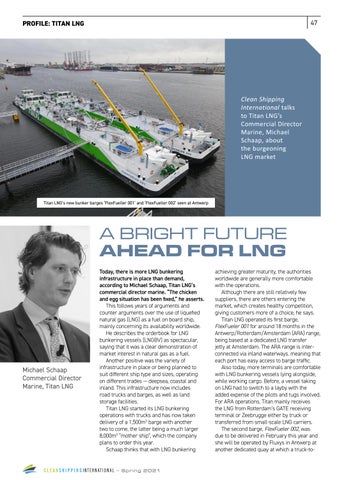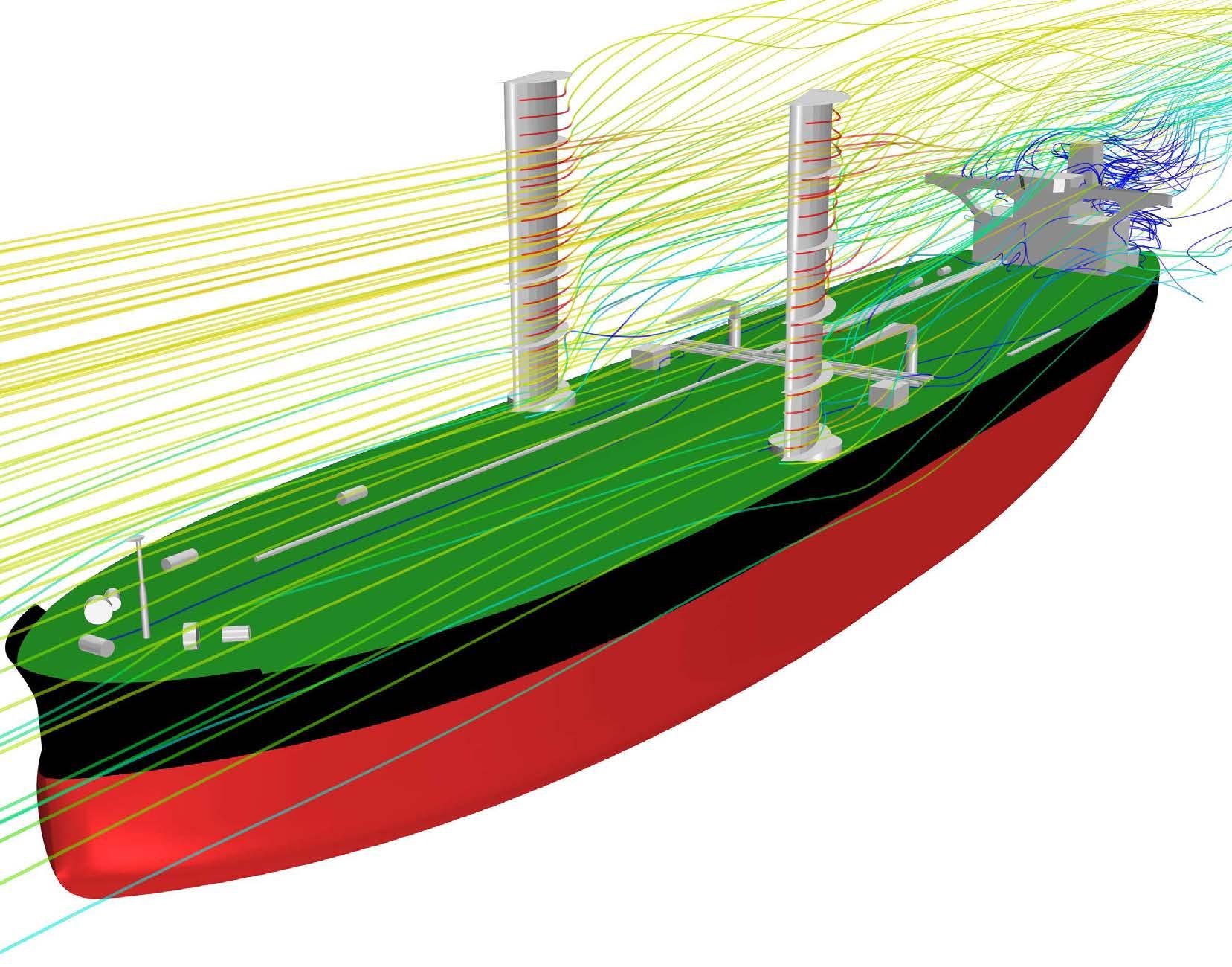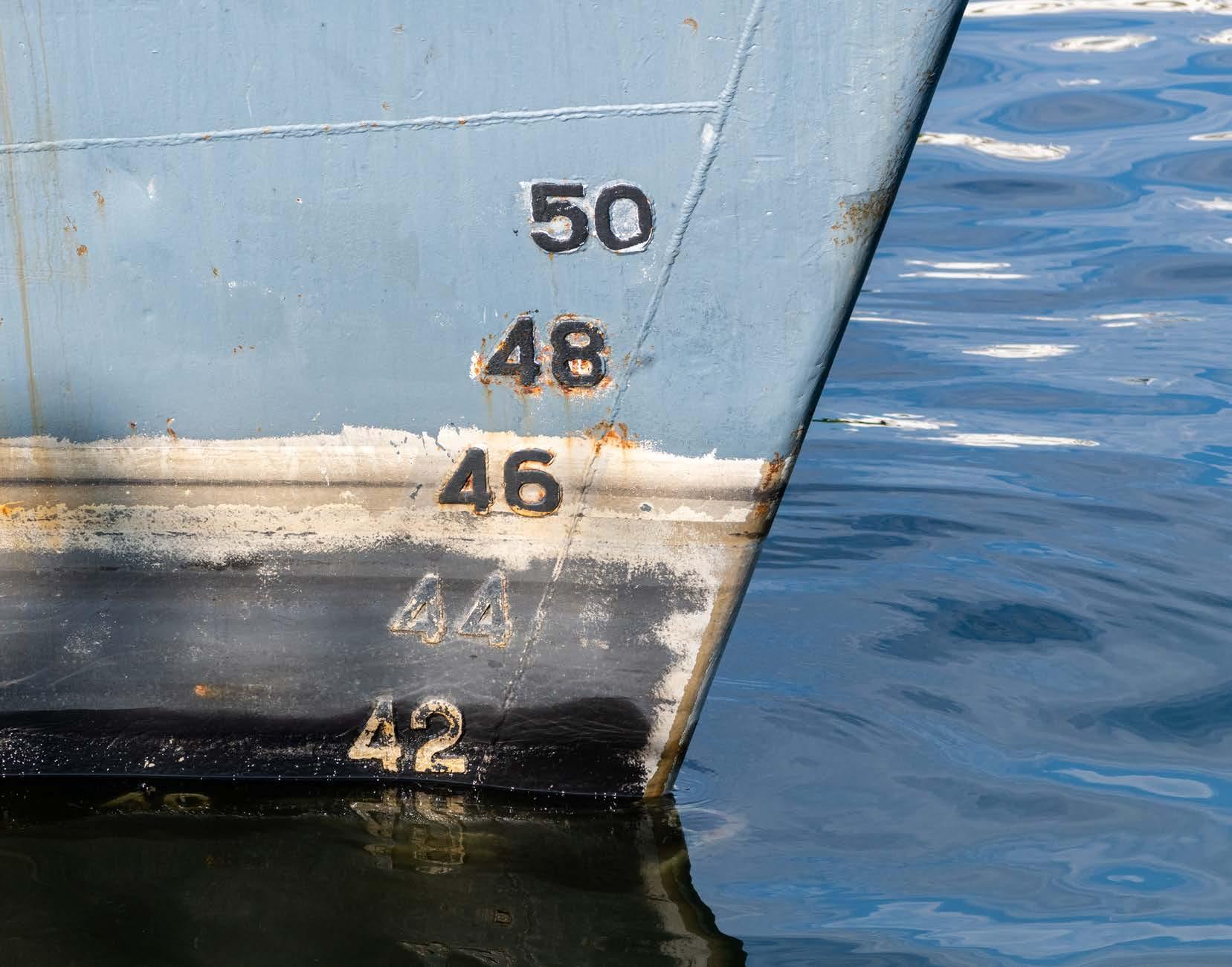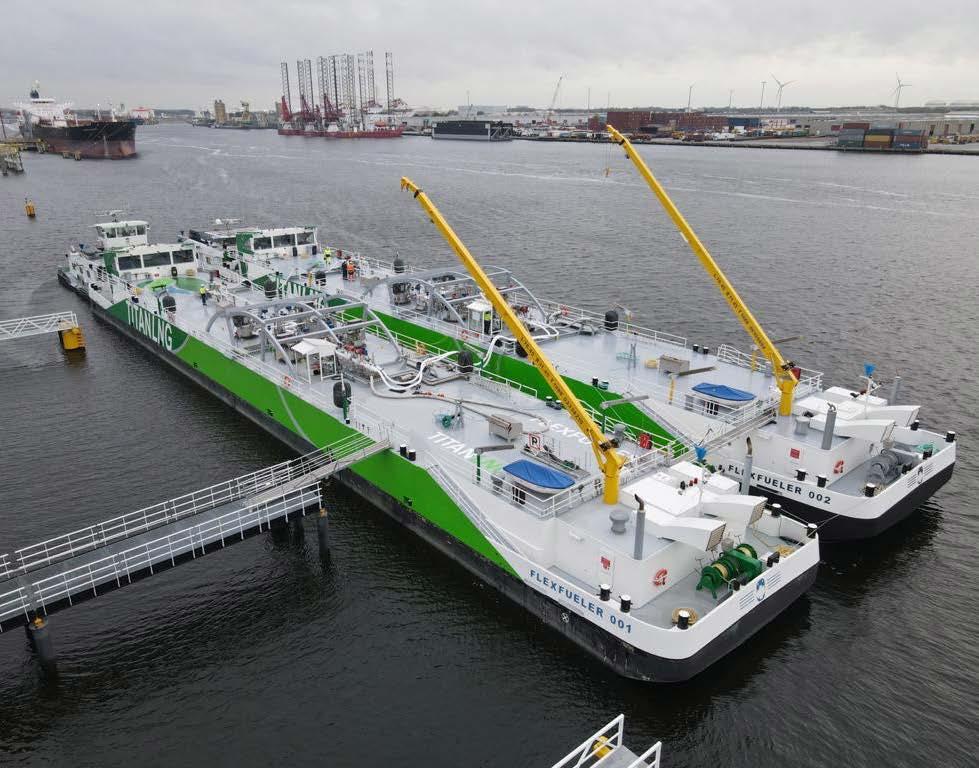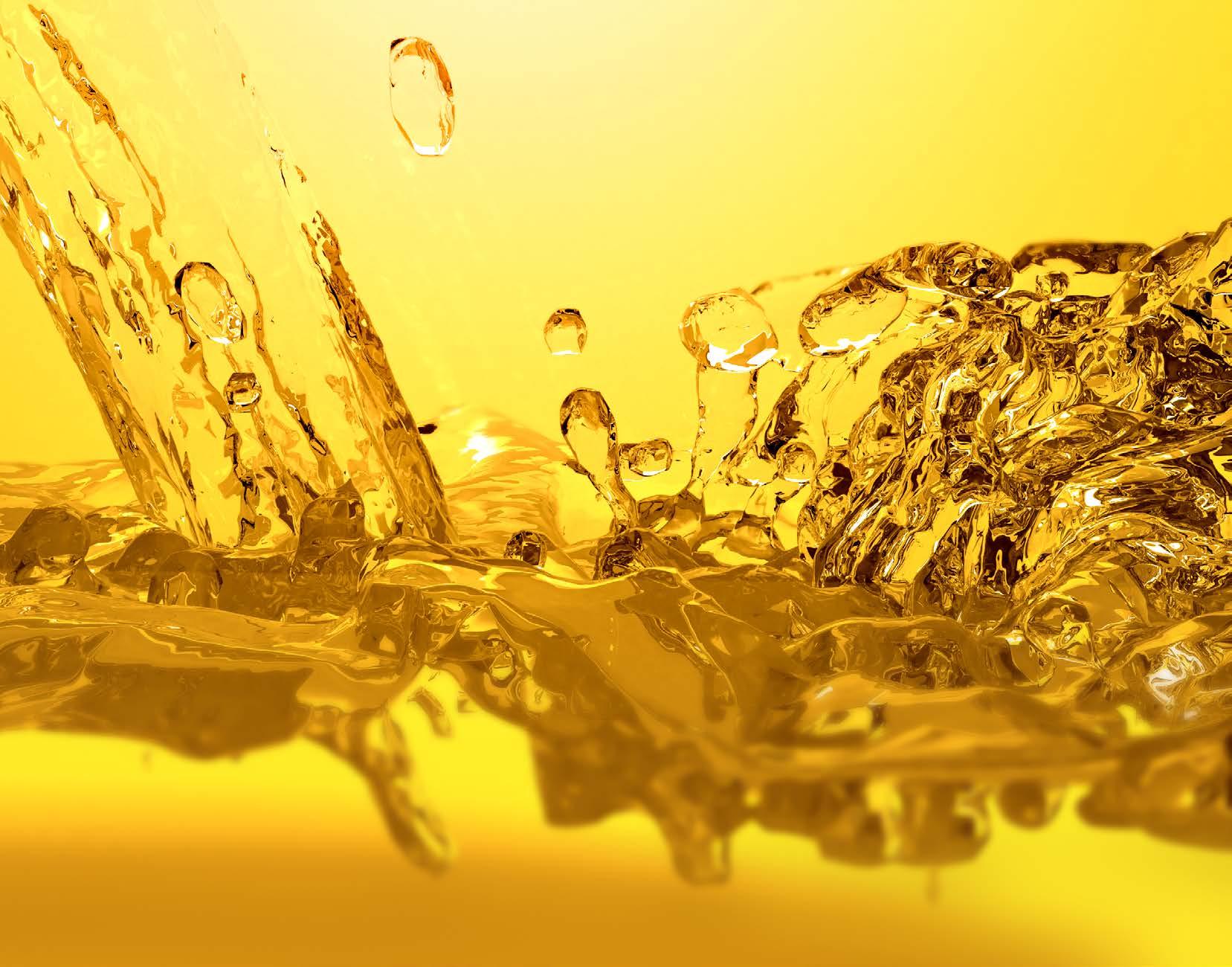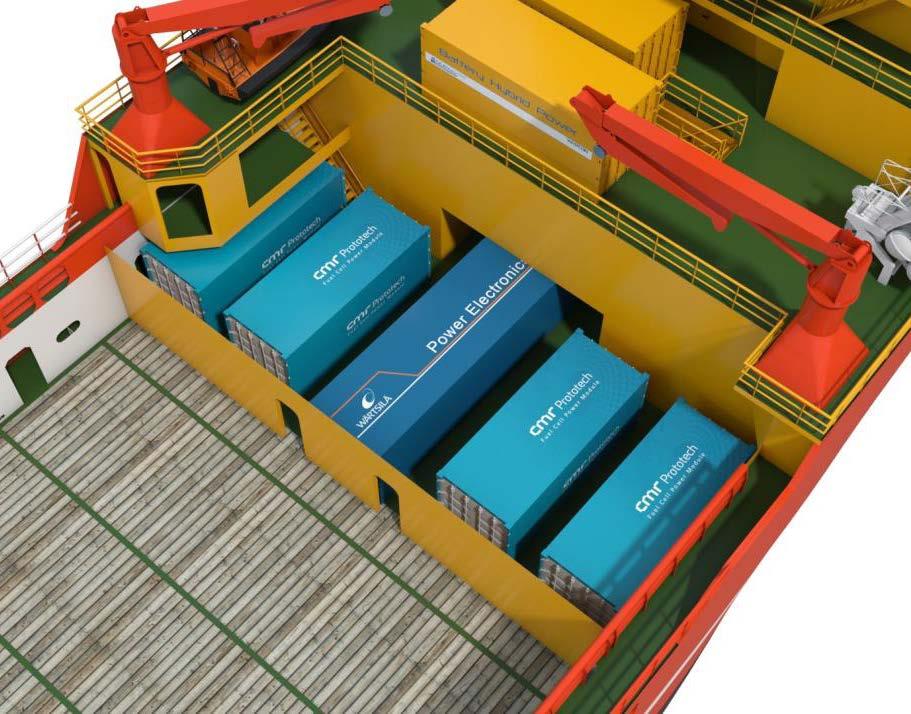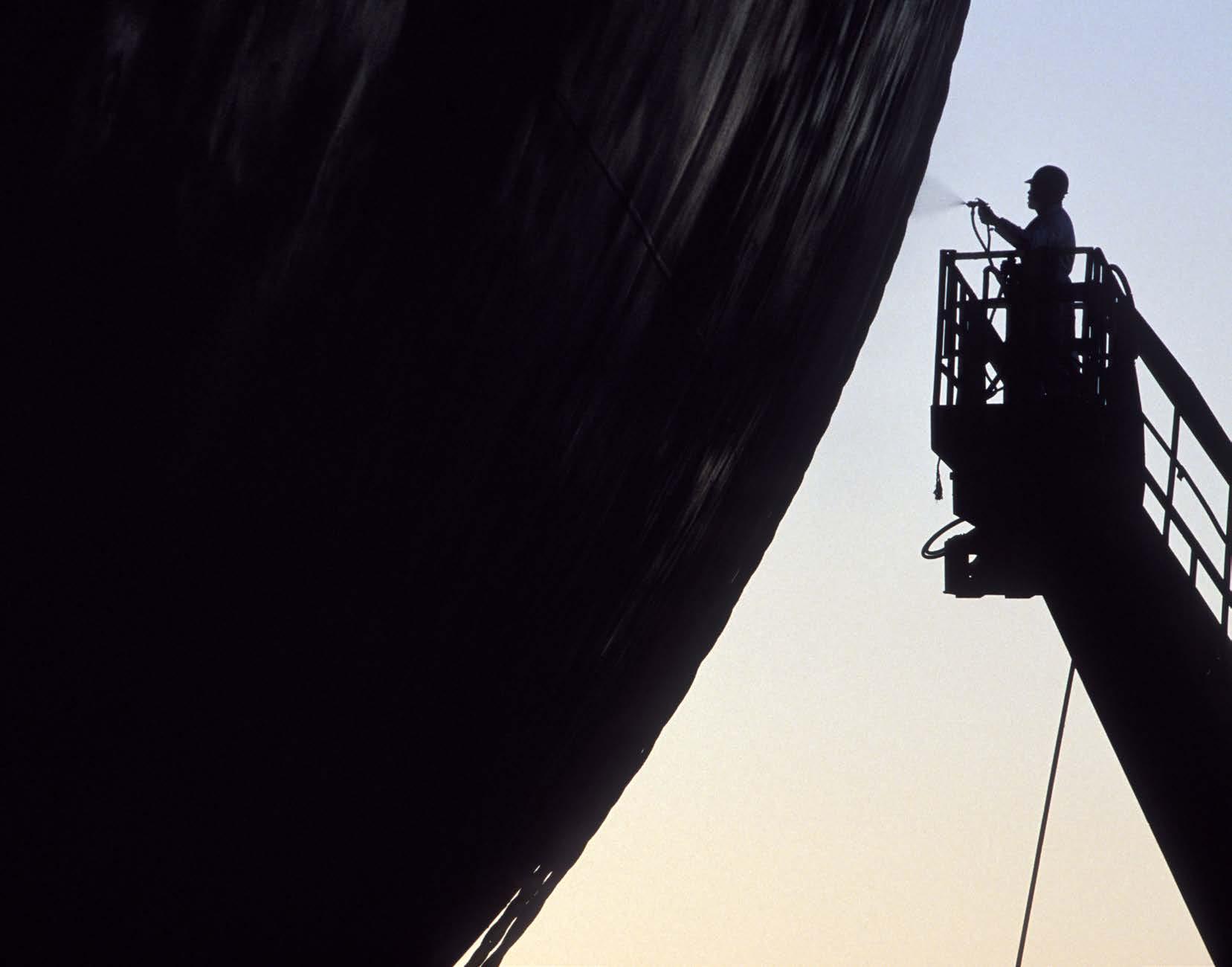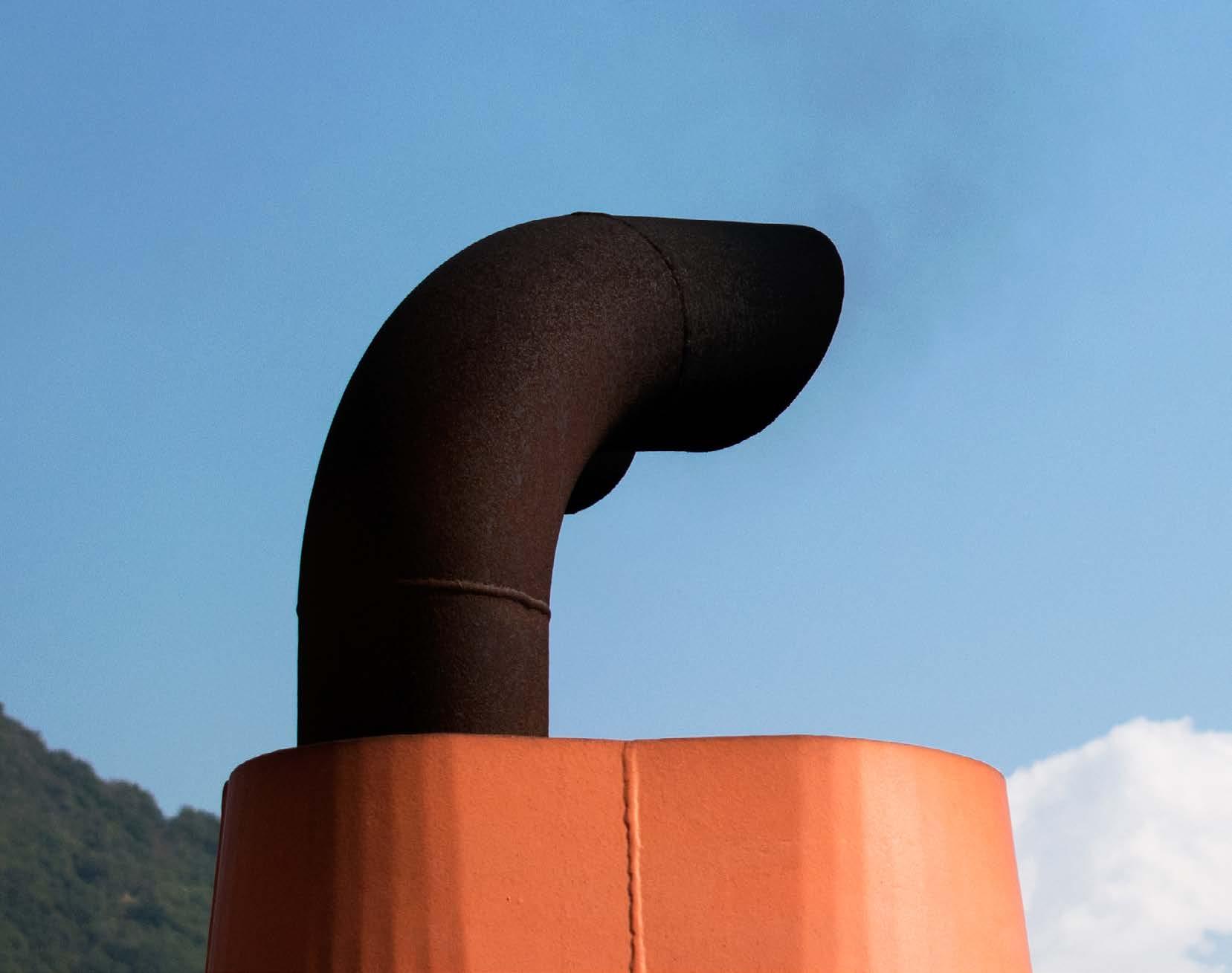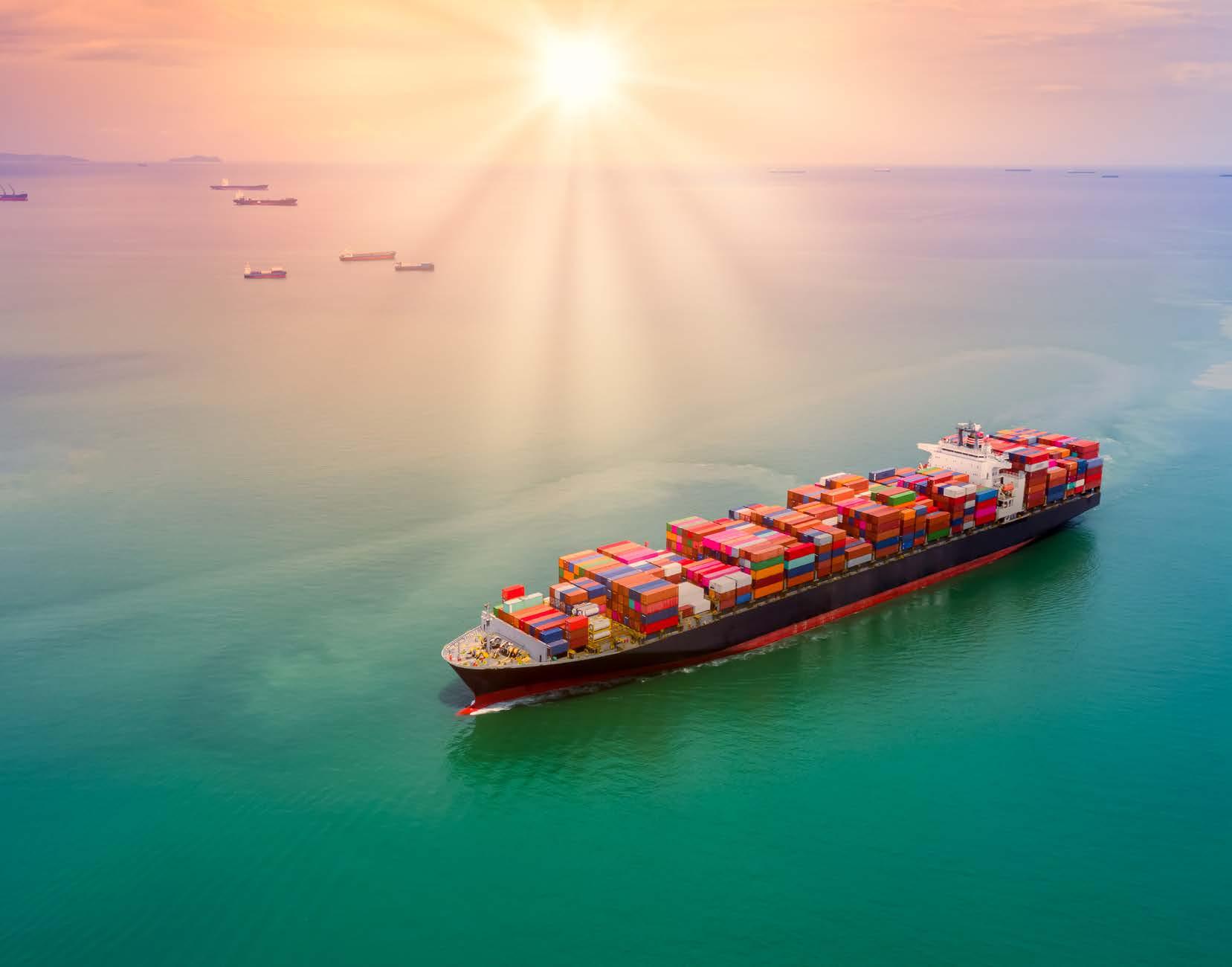47
PROFILE: TITAN LNG
Clean Shipping International talks to Titan LNG’s Commercial Director Marine, Michael Schaap, about the burgeoning LNG market
Titan LNG’s new bunker barges ‘FlexFueller 001’ and ‘FlexFueller 002’ seen at Antwerp
A BRIGHT FUTURE AHEAD FOR LNG
Michael Schaap Commercial Director Marine, Titan LNG
Today, there is more LNG bunkering infrastructure in place than demand, according to Michael Schaap, Titan LNG’s commercial director marine. “The chicken and egg situation has been fixed,” he asserts. This follows years of arguments and counter arguments over the use of liquefied natural gas (LNG) as a fuel on board ship, mainly concerning its availability worldwide. He describes the orderbook for LNG bunkering vessels (LNGBV) as spectacular, saying that it was a clear demonstration of market interest in natural gas as a fuel. Another positive was the variety of infrastructure in place or being planned to suit different ship type and sizes, operating on different trades — deepsea, coastal and inland. This infrastructure now includes road trucks and barges, as well as land storage facilities. Titan LNG started its LNG bunkering operations with trucks and has now taken delivery of a 1,500m3 barge with another two to come, the latter being a much larger 8,000m3 “mother ship”, which the company plans to order this year. Schaap thinks that with LNG bunkering
C L E A N S H I P P I N G I N T E R N A T I O N A L – S p r i n g 2 0 21
achieving greater maturity, the authorities worldwide are generally more comfortable with the operations. Although there are still relatively few suppliers, there are others entering the market, which creates healthy competition, giving customers more of a choice, he says. Titan LNG operated its first barge, FlexFueler 001 for around 18 months in the Antwerp/Rotterdam/Amsterdam (ARA) range, being based at a dedicated LNG transfer jetty at Amsterdam. The ARA range is interconnected via inland waterways. meaning that each port has easy access to barge traffic. Also today, more terminals are comfortable with LNG bunkering vessels lying alongside, while working cargo. Before, a vessel taking on LNG had to switch to a layby with the added expense of the pilots and tugs involved. For ARA operations, Titan mainly receives the LNG from Rotterdam’s GATE receiving terminal or Zeebrugge either by truck or transferred from small-scale LNG carriers. The second barge, FlexFueler 002, was due to be delivered in February this year and she will be operated by Fluxys in Antwerp at another dedicated quay at which a truck-to-
